- Time of past OR future Camino
- 2012, 2015, 2018, 2019, 2022, 2024
I assume you've read the book. You know what happens to people who visit the Total Perspective Vortex.If you pay a visit to the Total Perspective Vortex, all becomes clear.
| For 2024 Pilgrims: €50,- donation = 1 year with no ads on the forum + 90% off any 2024 Guide. More here. (Discount code sent to you by Private Message after your donation) |
|---|
I assume you've read the book. You know what happens to people who visit the Total Perspective Vortex.If you pay a visit to the Total Perspective Vortex, all becomes clear.
Heyy, Zaphod Beeblebrox isn't the only hoopie frood in the universe you know.I assume you've read the book. You know what happens to people who visit the Total Perspective Vortex.
What a line to end on!
As you may therefore already know, at the time Solomon's Temple was being built, The Sun rose in the West.
This thread is torture, never mind the TPV.If you pay a visit to the Total Perspective Vortex, all becomes clear.
This is not unexpected.
Solomon's temple was built about 3000 years ago. The Earth has not changed the direction of rotation in that time period.
I am beginning to think you are trolling us.
People don't stand on street corners, distributing pamphlets saying: "The sun's rising, The sun's rising". Those that do are not trying to convince others.What a line to end on!
As you may therefore already know, at the time Solomon's Temple was being built, The Sun rose in the West.
Crosbie, I look forward to hearing how your Camino unfolds. Do tell!The cute thing about The Sun rising in the West, is that it is so preposterous it serves as a safe shibboleth.
Geocentricity vs Heliocentricity was a contrived dispute - not a lot of people know that.
On the subject of ducks, if it weighs the same as a duck, it must be made of wood, because wood, like ducks, floats, and so it must be a witch:
I arrive at SJPdP on the 2nd - set off on the 3rd.
You've read the book. You know what happens to people who visit the Total Perspective Vortex.If you pay a visit to the Total Perspective Vortex, all becomes clear.
Here it isFor anyone who has not yet lost the will to live; there is a good podcast in the BBC ‘In our time’ series on the Templars. I recall that it describes how they set up one of the early international banking systems.
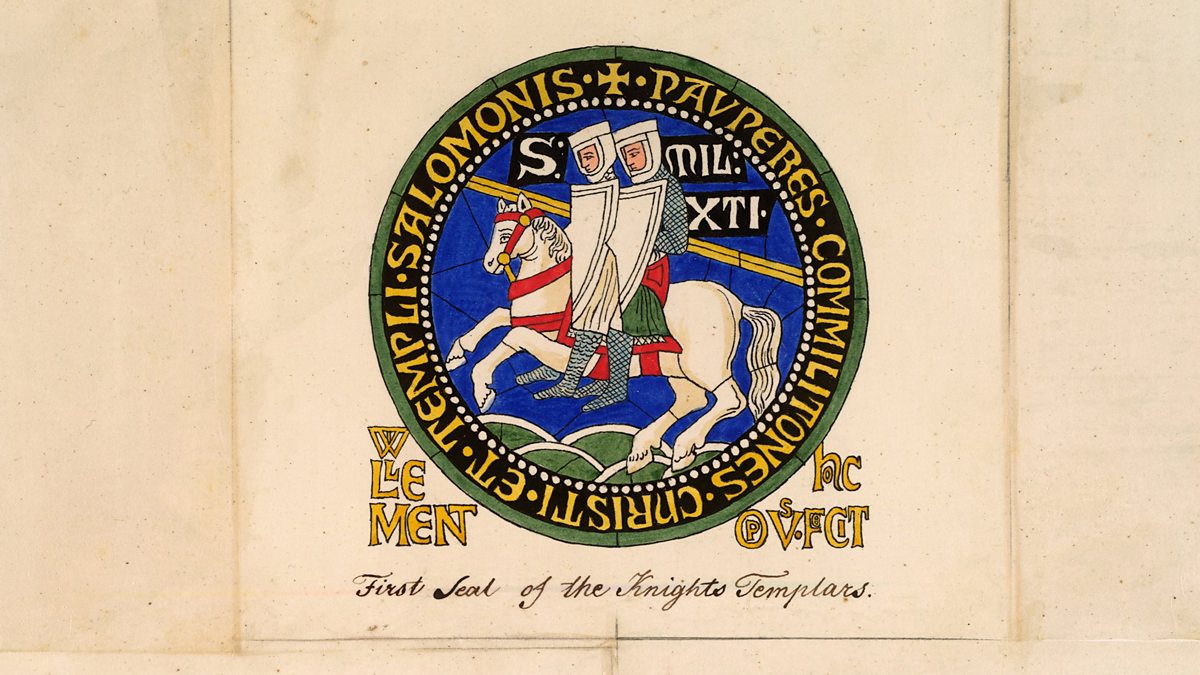
This is another good podcast and overview of the 200-year history of the Templar order. Towards the end of the podcast, a participant says that the concept of the military religious orders was "crucial to the culture and the political and religious existence on the Iberian peninsula for centuries".
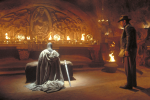
Certainly -- though the Orders most associated with the Camino itself were the Hospitallers and the Order of Santiago, the Templars being more associated with Portugal, in Iberia (and most likely the fight against the Muslims during the Reconquista), and with Jerusalem and the Way to Jerusalem.This is another good podcast and overview of the 200-year history of the Templar order. Towards the end of the podcast, a participant says that the concept of the military religious orders was "crucial to the culture and the political and religious existence on the Iberian peninsula for centuries".
Such documents are likely to be extremely rare, as the typical use of one would have been to cash it in.Returning to medieval pilgrims and their financial interaction with the Templar order:
In addition to the name of Pierre Sarrasin (various spellings of the name exist) I found again the name of another pilgrim who had financial dealings with the Templar order in connection with his pilgrimage. The name is given as Peter Deusde and his wife Elisabeth but I think this the spelling of the name in German. Probably Pedro and Isabel in Spanish and something similar in Latin. I've not found the original document in Latin yet.
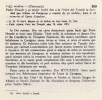
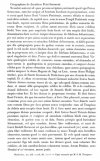
Found both of them! Below are transcripts of 12th and 13th century legal documents that have survived the centuries,
What on earth are you trying to say???Caualleria de Templum Salomonis = Cavalry from the Temple of Solomon
But, as many allege, there's no evidence of any such thing as Solomon's Temple, let alone the Knights Templar. So, those 'many' must conclude these transcripts are works of fiction.
As @peregrina2000 wrote above, moderators don’t close threads if no rules have been violated. But, as the ‘Original Poster’ you can ask the moderators for the thread to be closed. People do that for various reasons. Perhaps, e.g., if the thread has run its course for you.As it appears my comments are painful to others, enough for them to petition the closure of the thread, I will no longer comment unless invited to do so.
Not at all. I find the subject immensely interesting.Perhaps the thread has run its course for you.
I do not think that being a "newbie" is an issue here. It is the content of some of your posts which is regarded as questionable by many of us. Websites such as the knightstemplarorder.org site which make claims for historical "facts" which seem to have no support in conventional works on history or archaeology and which are associated with a fantastical world of secretive alternative world orders.However, as a newbie I have little standing in this forum, and to avoid further upset, I will have to defer to the more highly respected participants to explore the subject further,
I do not think that being a "newbie" is an issue here. It is the content of some of your posts which is regarded as questionable by many of us. Websites such as the knightstemplarorder.org site which make claims for historical "facts" which seem to have no support in conventional works on history or archaeology and which are associated with a fantastical world of secretive alternative world orders.
None of us has even suggested that Solomon´s temple didn´t exist, and I am fairly sure most of us would agree that the Temple Mount in Jerusalem is the likeliest site for it. And nobody on this thread has come anywhere near suggesting that the Templars didn´t exist, so I think you are being very unfair to the members who have posted on this thread. Not only that, far from disputing their existence, several members have gone to enormous time and trouble to discover and share some reliable facts about the Knights Templar. And FYI, if anyone were ´petitioning´(asking?) to have this thread closed, I would be one of the first know about it. By the way, the preposition ´de´ in Latin, as in modern Spanish can mean ´of´ as well as ´from´. ´From´ in Latin is usually ´ab´.Caualleria de Templum Salomonis = Cavalry from the Temple of Solomon
But, as many allege, there's no evidence of any such thing as Solomon's Temple, let alone the Knights Templar. So, those 'many' must conclude these transcripts are works of fiction.
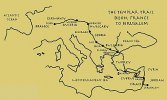
so I think you are being very unfair to the members who have posted on this thread.
Like a lot of others, I think your ideas are 'interesting' - but give you a lot of credit for staying engaged and not getting personal or angrily defensive when the world (here anyway) disagrees with you.I'm really not doing at all well, am I?
Nope.I will add 'unfair' to codswallop, troll, fiction, fantasy, conspiracy theory, fabulism, boring ('other participants to death'), tiresome ('fed up to their teeth and beyond'). I'm really not doing at all well, am I?
I invested a couple of minutes in running the images through Google Translate just to get a quick and dirty idea of what they contained. Whatever Latin grammar I once learned has long since leaked away! Interesting stuff about wills and their conditions. A reminder that complicated property settlements are nothing new!I invested some time in tracking down the transcripts of two 12th and 13th centuries. I can now amuse myself for a few rainy afternoons with figuring out the vocabulary and grammar.
Well, clearly the poorer pilgrims would not have travelled with such documents -- but my impression from academic studies I've read concerning the Mediaeval Jerusalem Way is that many of the pilgrims on that way undertook a temporary vow of poverty, the foot pilgrims anyway.such letters of credit were mainly issued in connection with a pilgrimage to Jerusalem which was an expensive journey in the 12th and 13th century and mainly undertaken by wealthy citizens, apart from the poor who travelled with and in the wake of the overland crusader armies.
Nice find for the 1135
erm, as to :By the way, the preposition ´de´ in Latin, as in modern Spanish can mean ´of´ as well as ´from´. ´From´ in Latin is usually ´ab´.
I agree with others that your disposition is admirable.
Like a lot of others, I think your ideas are 'interesting' - but give you a lot of credit for staying engaged and not getting personal or angrily defensive when the world (here anyway) disagrees with you.
That's doing well in my book.
Crosbie, for whatever it’s worth, it would be fun talking with you on the way. I mean that sincerely. Your cited sources were debatable and dubious, as you’ve acknowledged... Yet I agree with others that your disposition is admirable. This forum is a fount of knowledge: continually educational, often humblingly so. I do hope you’ll stick around to experience the same over time – it’s worth it!Here’s to a truly buen Camino.
I don't recall this but it does not mean that I doubt itThat wasn't what we were told when we visited the castle. Certainly the vast bulk of the castle is from a later date. But I distinctly remember reading in the signage that the part of the castle in the picture below was what remained of the original Templar castle.
View attachment 154720
I hope you have checked the meaning of ´a priori´.The point of my original post was in pursuit of further knowledge regarding my suspicion of a connection between Hospitaliers/Templiers and the CdS. I did not set out to evangelise or argue 'the truth'. I did indicate my premises, to help others know where I was coming from.

This is too funny to ignore ...6) Hospitaliers/Templiers are the missionaries of The Ark, with co-operation and support from The Vatican and other powers & principalities.
Let´s go back to your first post. You state there that the Templiers and Hospitaliers (sic) were founded in circa the 10th or 11th centuries, which is a pretty wide ball park. Most if not all reliable authorities are a little more precise in dating the founding of the Knights Templar to 1119 (12th century). Later, and in this post, you assert that the Templars were founded in the 9th century. So which is it? 9th, 10th, or 11th? or 12th?
That's the sort of thing taught in Sunday school, i.e. completely wrong.The Holy land is so-called by Christians because that´s where Jesus lived.
This is what William of Tyre, chronicler of his time, wrote: They are called fratres militiae Templi. [Very literally: brothers / of the militia / of the Temple]. The Templum, as you can see in the very same sentence is the Templum Domini, the Temple of the Lord, the Temple of God.
Ah-ah-ah, you are doing it again: bad discussion move - twisting a quote and grossly distorting the context, whether knowingly and intentionally or not, I can't say. It's yet another non-sequitur fallacy.that they can be traced back to the 9th century is a certainty in my book, and, for what little it's worth, is corroborated by the link provided by Kathar1na (Ordres du Temple et Hôpital sur les chemins de Saint-Jacques (XIIe-XIIIe siècles):
The text in question is:
Attesté depuis le IXe siècle, l'essor du pèlerinage à Compostelle est exactement contemporain de la naissance des deux grands ordres militaires en Terre sainte, puisque c'est dans les années 1100-1120 que l'archevêque Diego Gelmirez lui donne une impulsion définitive.The pilgrimage to Santiago de Compostela has been attested since the 9th century. Well-known.
Not a word of a Solomon temple and its existence or non-existence. Let alone a word of the Knights Templars being in existence since the 9th century.
Well done, and thank you. This thread is perplexing to me. I am not logical by inclination, and cannot argue in a proper sense, not in the sense of aggressive argumentation, but debating respectfully. I never doubt your integrity or honest research and sharing of knowledge.That is the point where I despair:
Author writes: Birth of the two great military orders in the Holy Land.Poster writes: This corrobates my certainty that they can be traced back to the 9th centuryOther poster writes: The author does not say that.Poster replies: The Knights Templars are not the same thing as the Templars. The Templars begat the Knights Templars.
Sure, in alternative history books. BUT THE AUTHOR DOES NOT SAY THAT. THE LINK THAT I PROVIDED TO THE AUTHOR DOES NOT SAY THAT.
Apologies, people, usually I do not react and let it roll off my back like water rolls off the duck's back. But lately I notice that my forum name is needlessly quoted and appears to be used in quotes like an endorsement for weird stuff. It forces me to reply in order to set the record straight although I don't want to participate. And I don't like it.
I appreciate the clarity of such as yourself. Thanks. I am better with a yard brush than a sleuth's narrowed eyes and inquisitive mind! I am serious. We each have our gifts, and the wonderful moments of genuine searching and sharing here make it worthwhile, don't they?Thank you for your earlier comment, @Kirkie.
I like to share something I found and I am more interested in doing that than winning arguments. So you can find a book, written 900 years ago, online, and read it at home or at least a bit of it. No need to buy it, no need to travel to a uni library to read it in their reading room or ask for a distance loan. No need to take a quote of a quote of a quote for what had actually been said or been written such a long time ago. Isn't that exciting?
You find a good example that shows that authors of solidly sound books can make minor mistakes that get repeated over and over in other similarly sound books. Not surprising, a modern author cannot check every minute detail in every original source, especially not when it just serves to give an overview or an introduction to the main topic, to help the reader see context. My main point.
And then, second but minor point, doesn't one wonder, okay, so this 12th century outfit was not known with the word "Solomon" in their title, at least not to this contemporary author, where did the reference to Solomon in their title then come from, from when onwards and by whom was it used then? Isn't that what an inquiring mind would think? Instead, an illogical baseless repetitive reply.
This needed to be said to clear the air.
That is the point where I despair:
Author writes: Birth of the two great military orders in the Holy Land.Poster writes: This corrobates my certainty that they can be traced back to the 9th century
*Nine Years Excavating the Temple* – Many historians concluded that the
first Knights Templar essentially stayed underground deep within the
Temple of Solomon, mostly not resurfacing except to send for supplies,
for several years:
“The Templars’ apparent lack of activity in their formative years, seems
to have been due to some form of covert project beneath the Temple of
Solomon or nearby, an operation that could not be revealed to any but a
few high-ranking Nobles.” [*32*] [*33*]
University historians confirmed that the founding Knights Templar
conducted archaeological excavation of the Temple of Solomon for a full
nine years [*34*].
Then why do you get excited about this distinction ?It is immaterial whether it's called God's Temple or Solomon's.
riiiiiiigggghhhht, ad let's pretend that Lutèce and Paris refer to two different places.And the Knight's Templar aren't quite the same thing as the Templars
What a load of bollox.It is becoming clear that the initial 'pilgrimage' directly arose from the discovery of the Ark of The Covenant, when the proto-Templars discovered it (forcibly opened) during their assessment of the extent of the desecration committed in the 9th century. Hence the dating of the relics at 830AD.
This has been a very entertaining thread, but I am afraid that if I should agree with you, then we would be two that are wrong.It is becoming clear that the initial 'pilgrimage' directly arose from the discovery of the Ark of The Covenant, when the proto-Templars discovered it (forcibly opened) during their assessment of the extent of the desecration committed in the 9th century. Hence the dating of the relics at 830AD.
It's absolute nonsense start to finish, and is pretty much the direct opposite of being useful to pilgrims.Don't close this thread
Thankfully, no one is obligated to read and respond to every thread on the forum.It's absolute nonsense start to finish, and is pretty much the direct opposite of being useful to pilgrims.
This does not justify the publication of pure fabrications into this place that are liable to directly mislead pilgrims, and put false ideas into their heads.Thankfully, no one is obligated to read and respond to every thread on the forum.
Actually, it would not put a false idea into my head. It is way outside my range of important issues.This does not justify the publication of pure fabrications into this place that are liable to directly mislead pilgrims, and put false ideas into their heads.
I somewhat agree with the general argument against allowing pure fabrications on the forum. However, the real facts about the original hypothesis are very few, and I think that the forum members (including you) have made a very strong case that should dissuade future pilgrims from being misled. It has been somewhat informative for those who are interested in the topic, and has been an interesting exposé of the weaknesses of much historical "research."This does not justify the publication of pure fabrications into this place that are liable to directly mislead pilgrims, and put false ideas into their heads.
So, not a certainty then? In which case, any line of reasoning based on that premise is unsound, which means that just about everything you have said in this thread is, by your own admission, implausible,I said "It seems that the CdS pilgrimage arose at about the same time as the formation of the Templiers and Hospitaliers, i.e. circa 10th, 11th centuries."
That is a 'seems', not a certainty - and I meant 'formation' as in a continued development from their earliest origins - not as in 'founded'.
I think you might have misunderstood this sentence:corroborated by the link provided by Kathar1na
Frankly, I don´t think there is any great danger of this happening.pure fabrications into this place that are liable to directly mislead pilgrims, and put false ideas into their heads.
The internet gambling companies, purveyors of fantasy all, are compelled to place the phrase "Stop when the fun stops" in their promotions.
The phrase seems apposite here.
And the manufacturers of well known salty snacks have to state ‘Caution: May contain nuts’
I’m strangely finding much of the above interesting.
The internet gambling companies, purveyors of fantasy all, are compelled to place the phrase "Stop when the fun stops" in their promotions.
The phrase seems apposite here.
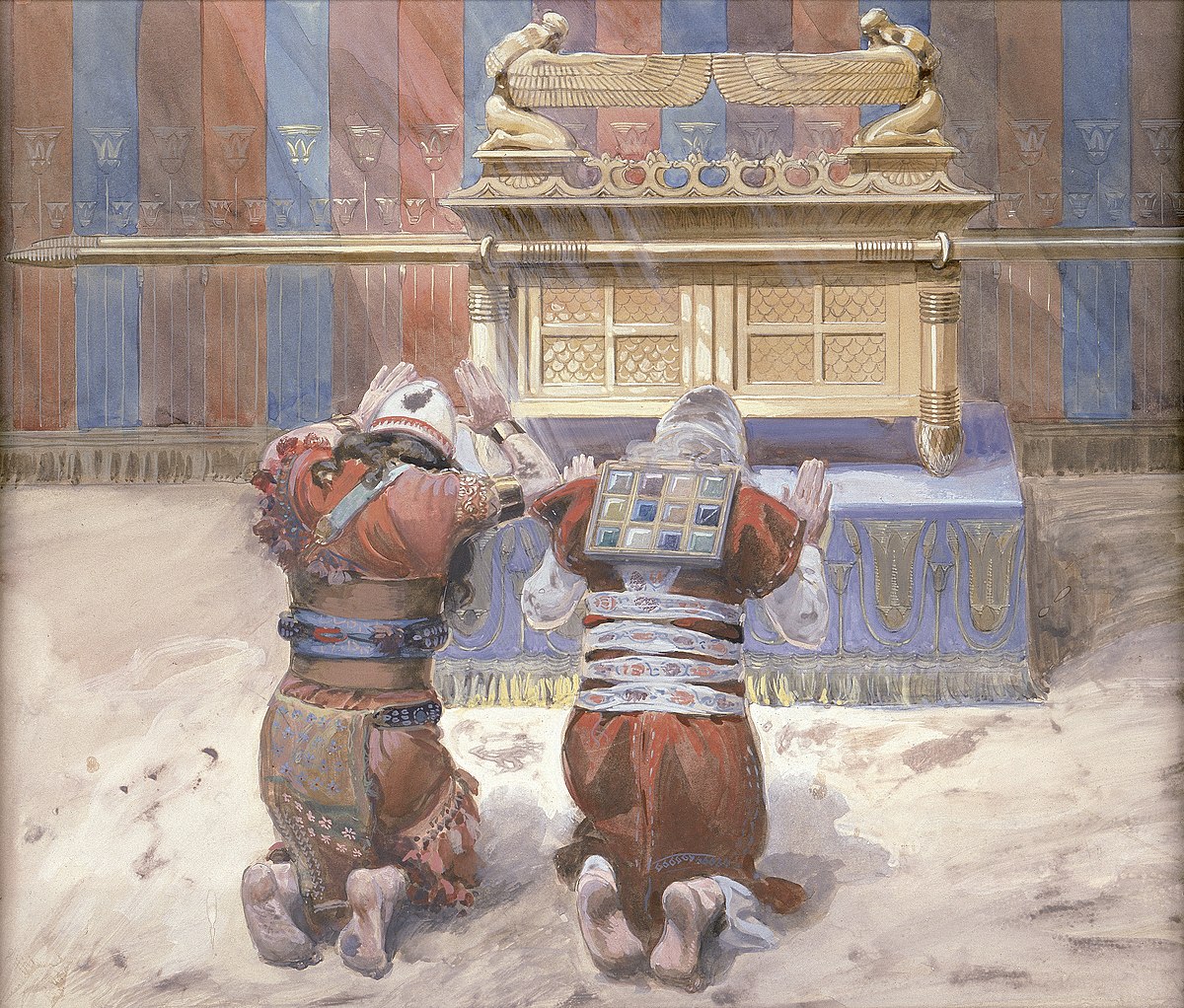
Very much so. In addition to the claimed original Ark in the church in Axum there are representations of it as carved tablets called tabot in Ethiopian churches. Treated with great reverence and always veiled from public sight. A friend of mine discovered one which had been looted in colonial times and was gathering dust in a church cupboard in Edinburgh. As a very bright spark who knew something about the Ethiopian church John recognised it and its significance and arranged for its repatriation to Ethiopia. A national holiday was declared for its homecoming and thousands lined the streets for its arrival.And the idea ia still alive in Ethiopa.
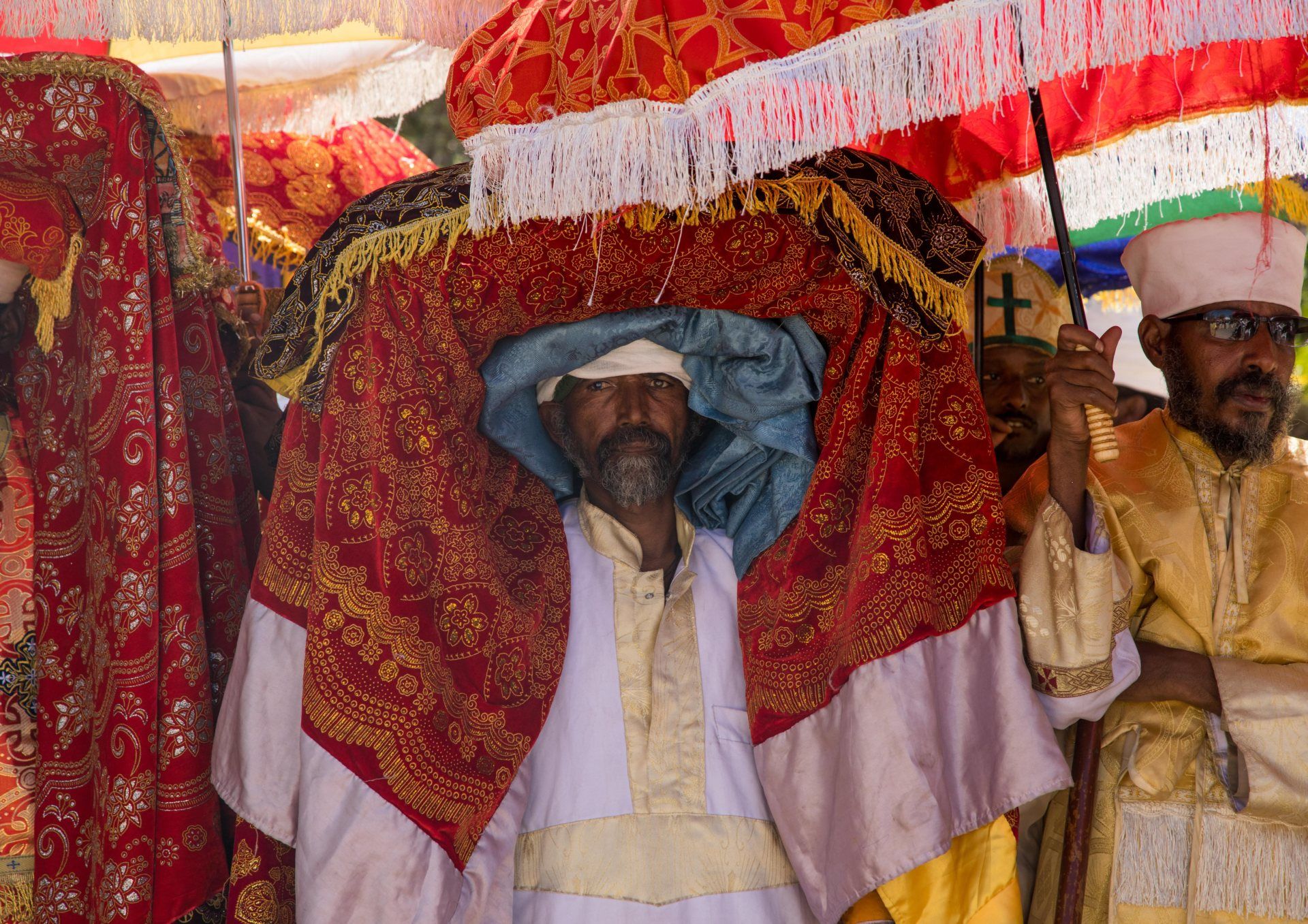
I just saw this post and sorry I did not respond sooner. I think you would be very interested in listening to this podcast:It seems that the CdS pilgrimage arose at about the same time as the formation of the Templiers and Hospitaliers, i.e. circa 10th, 11th centuries.
I am intrigued by what I suspect is a probable connection.
The Hospitaliers were those who established secure places of refuge for travelling knights Templar, i.e. two sides of the same coin.
It is possible that the CdS route is simply one of the key routes for Templars travelling to/from Egypt via Morocco, Portugal, SdC, on to France, etc.
So, it is possible that 'pilgrimage' arose as a cover that Templars adopted when they travelled this key route - as it became established.

I don't think it is becoming clear to anyone but you.It is becoming clear that the initial 'pilgrimage' directly arose from the discovery of the Ark of The Covenant, when the proto-Templars discovered it (forcibly opened) during their assessment of the extent of the desecration committed in the 9th century. Hence the dating of the relics at 830AD.
David, this is part of Crosbie´s style. If you look through his posts you will find well over a dozen uses of expressions like 'It seems', 'It is possible that', 'I suggest', 'No doubt' etc etc. This kind of language is appropriate when discussing inferences and deductions but when basic premises are hedged in this way, the conclusions are pretty well invalidated.it is becoming clear
Really, I think nothing is becoming clear. Things are just becoming murkier as a whole bunch of phrases are thrown around that don't seem to have much to do with each other.I don't think it is becoming clear to anyone but you.
I'm not sure which "pilgrimage" you mean by "the initial 'pilgrimage'". The initial pilgrimage to Santiago de Compostela? Some pilgrimage to Jerusalem? Nor is it clear what desecration you are discussing that presumably took place in the 9th century and where it took place. As Dick Bird points out, the desecration of the Temple happened many centuries before the 9th. In the 9th Century, there no longer was a Temple in Jerusalem to desecrate, it having been destroyed in 70 AD. Christian pilgrimages to the Holy Land were not focused on visiting the Temple, but on the churches built around the holy ditrs related to Christ's Passoon.
Nor is it clear what relics you are talking about at the end of the quote above.
The initial pilgrimage to Santiago de Compostela is well documented not to have arisen from a discovery of the Ark of the Covenant, but rather a discovery of the remains of St. James. It is the discovery of the relics of St. James that has been dated to 830 AD (or at least between 818 and 842).
Are you suggesting that there was another discovery, of the Ark of the Covenant, also made in the 9th Century? Do you believe that discovery to have been made in Galicia? Or elsewhere?
If by "initial pilgrimage" you are not speaking of the pilgrimage of Alfonso II to the relics of St. James, but of some other, earlier pilgrimage that set a model for future pilgrimages, I would humbly submit the date to look at is far before the 9th Century and at least as far back as the pilgrimages to Jerusalem that ended at the Temples of Solomon or Herod.
Really, I think nothing is becoming clear. Things are just becoming murkier as a whole bunch of phrases are thrown around that don't seem to have much to do with each other.
From: https://en.wikipedia.org/wiki/Santiago_de_Compostela#HistoryAt some point between 818 and 842,[18] during the reign of Alfonso II of Asturias,[19][20] bishop Theodemar of Iria (d. 847) claimed to have found some remains which were attributed to Saint James the Greater.
Around the place of the discovery a new settlement and centre of pilgrimage emerged, which was known to the author Usuard in 865[23] and which was called Compostella by the 10th century.
In the Old Testament Jacob constructed an altar for God naming it Bethel, which means "House of God" (Gen. 35:7). Jacob is a Greek name, and translated to Spanish, the name means James. Jacob constructed the "House of God,” and St. James parallels his namesake with the construction of the first "House of God” of the New Covenant.
Either (a) or (b)? No! Either (a) or any one of many explanations that you don't present.The question is, why there? Either some relics of the Temple had travelled that way... or it was part of a gambit to deflect attention from Solomon's Temple and/or the Holy Land.
It's not easy to connect
However, I could connect
"Connecting" is not cause and effectto connect SdC to Solomon's Temple.
Either (a) or (b)? No! Either (a) or any one of many explanations that you don't present.
But here is where I could use some help in seeing the logic pattern...
"Connecting" is not cause and effect
Is "connection" a logic thing?
Wait.....is there any evidence that the Templars used barrels of monkeys to disguise their secret doings?Like I said (supra #24), more fun than a barrel full of monkeys!
No, changing to "and/or" would not have changed the essential error in logic, which was to ignore all the (c), (d), (e), (f), etc. options.Ok, for completeness, it may have been better to use 'and/or' instead of just 'or'.
If I had a (c), I would have mentioned it.
Having been a software engineer for half a century, I may have come acrosss this 'logic' of which you speak.No, changing to "and/or" would not have changed the essential error in logic, which was to ignore all the (c), (d), (e), (f), etc. options.
This is complete nonsense.Saint James the Greater aka Saint Iago (from Iacob - Jacob) is an apostle esoterically associated with the Sagittarius constellation (field of stars - Campus Stellae - Compostela).
It's not easy to connect that with Solomon's Temple.
However, I could connect John the Evangelist, who symbolises the Zodiacal quadrant of Scorpio-Libra-Virgo.
Boolean logic is a very poor substitute for thought as such.Having been a software engineer for half a century, I may have come acrosss this 'logic' of which you speak.
As a matter of fact, this sort of claim is entirely pagan and has no relevance to the Apostle of Christ Saint James.Looking into the name 'Santiago de Compostela', per Wikipedia:
Saint James the Greater aka Saint Iago (from Iacob - Jacob) is an apostle esoterically associated with the Sagittarius constellation (field of stars - Campus Stellae - Compostela).
It's certainly a romantic idea, but it's actually unlikely that Compostela derives from Campus Stellae.Saint James the Greater aka Saint Iago (from Iacob - Jacob) is an apostle esoterically associated with the Sagittarius constellation (field of stars - Campus Stellae - Compostela).
OK, I admit I am an amateur in this, but my questions were not a petty foray. They were trying to get at the root of some apparent lack of understanding of the substance of your posts. I certainly am having trouble, and I'm likely not the only one!Having been a software engineer for half a century, I may have come acrosss this 'logic' of which you speak.
As I said, if there had been other options, I would have mentioned them. Ipso facto, there is no error in logic.
Let's not let this petty foray into semantics and logic distract from the substance of my posts #179 & #180.
The question is, why there? Either some relics of the Temple had travelled that way... or it was part of a gambit to deflect attention...
It goes far beyond that.You might ask "Do you wear shoes or boots on the Camino?" The results will indicate that X% wear shoes and (100-X)% wear boots. It would be wrong to conclude that no one wears sandals.
Hmmm. I will need to ponder that!The deeper flaws involve supposing that aesthetics could be systematically reduced to data.
...
You might ask "Do you wear shoes or boots on the Camino?" The results will indicate that X% wear shoes and (100-X)% wear boots. It would be wrong to conclude that no one wears sandals.
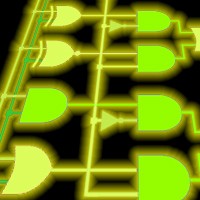
then its due for sauce a la orangePeople don't stand on street corners, distributing pamphlets saying: "The sun's rising, The sun's rising". Those that do are not trying to convince others.
Sometimes a cigar is just a cigar.
If not walking from your front door, then perhaps start in Le Puy, or Vezelay.
Buen Camino
PS: Ancient Greeks and early Christians knew the earth was a sphere. Plato wrote about a spherical Earth. This myth was created in the 17th century by Protestants to argue against Catholic teachings.
If it looks like a duck, swims like a duck, and quacks like a duck, then it's a .....
¨When you have eliminated the impossible, whatever remains, however improbable, must be the truth.¨As I said, if there had been other options, I would have mentioned them. Ipso facto, there is no error in logic.

